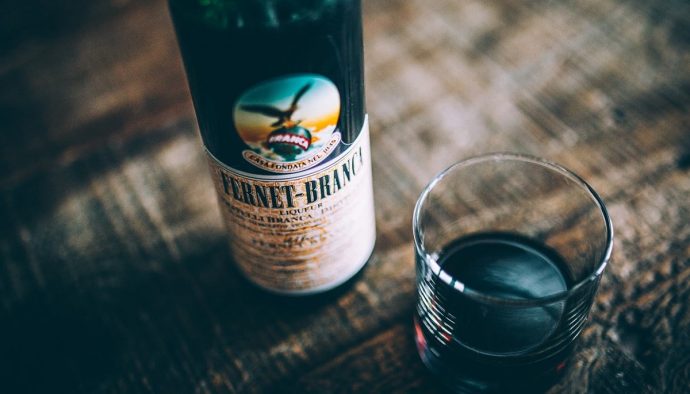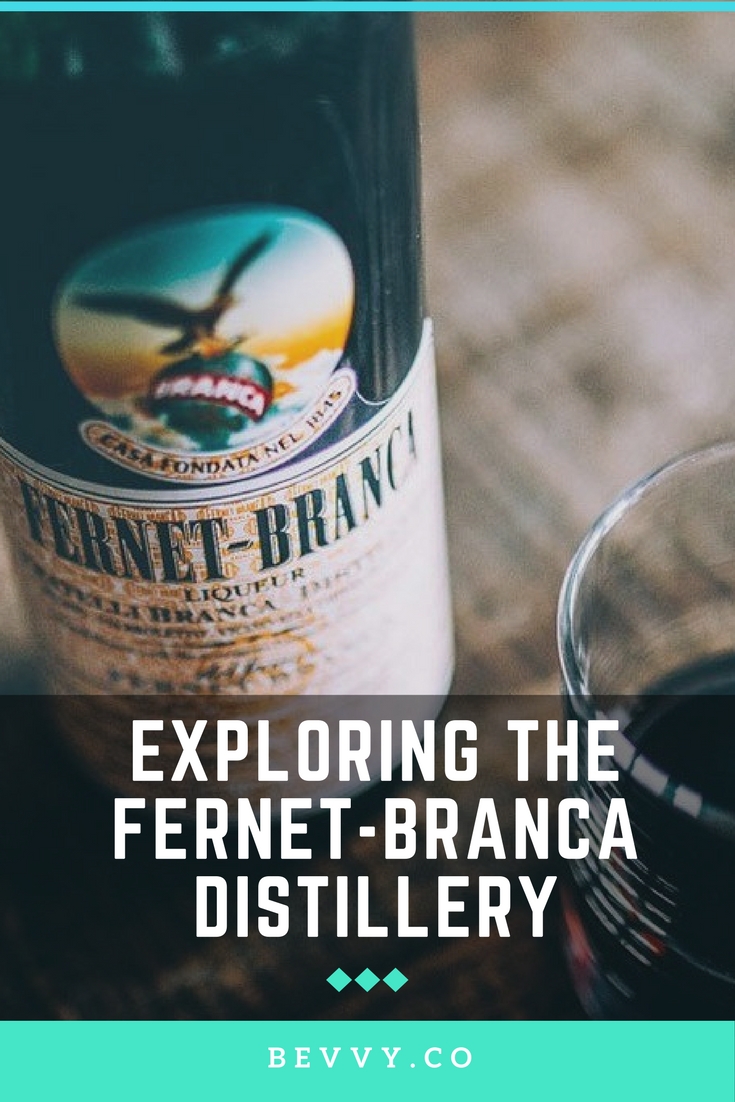The year is 1845. The city of Milan is afflicted by epidemics of cholera and malaria. You, an upright citizen, feel a calling to help your city in its time of need. What do you do?
You invent Fernet-Branca, of course. This dramatic—and true—origin story is just one of the things I learned about the divisive digestif when I recently visited its historic Milan distillery.
Calling the site a “distillery” might be underselling it. The large, faintly pink stone building that sits in an otherwise residential neighborhood also serves as a factory, corporate office, and museum. My guide for the journey is Margherita Vaschetto, who works as Fernet-Branca’s Corporate Communications Manager.
Vaschetto prefaces our tour with that tale about the brand’s origins. That upright citizen was Bernardino Branca, who created a medicinal spirit using herbs from four different continents. He began selling it to Milan’s Fatebenefratelli hospital, which is still an important medical center today. The hospital soon sent him a letter, stating that his product was curing patient’s diseases. Requests for the spirit began pouring in from across Italy, and soon the world.
Fernet-Branca: the Early Years
With demand exploding, Bernardino founded a company he called Fratelli Branca Distilleria—or Branca Brother’s Distillery, named in honor of his three sons, Giuseppe, Luigi, and Stefano.
The original distillery was located in Milan’s Porta Nuova neighborhood, but moved to its present, larger location between 1910 and 1915. At that time, the land the distillery now occupies was still countryside. Today it is a part of Milan’s city center, and the distillery’s continued presence in the neighborhood is an anomaly—most distillers have moved their operations outside of the city.
But construction was not limited to the distillery. The company also built housing for its workers, and schools for their children, in effect building their own little factory town. Some workers still live in the surrounding neighborhood.
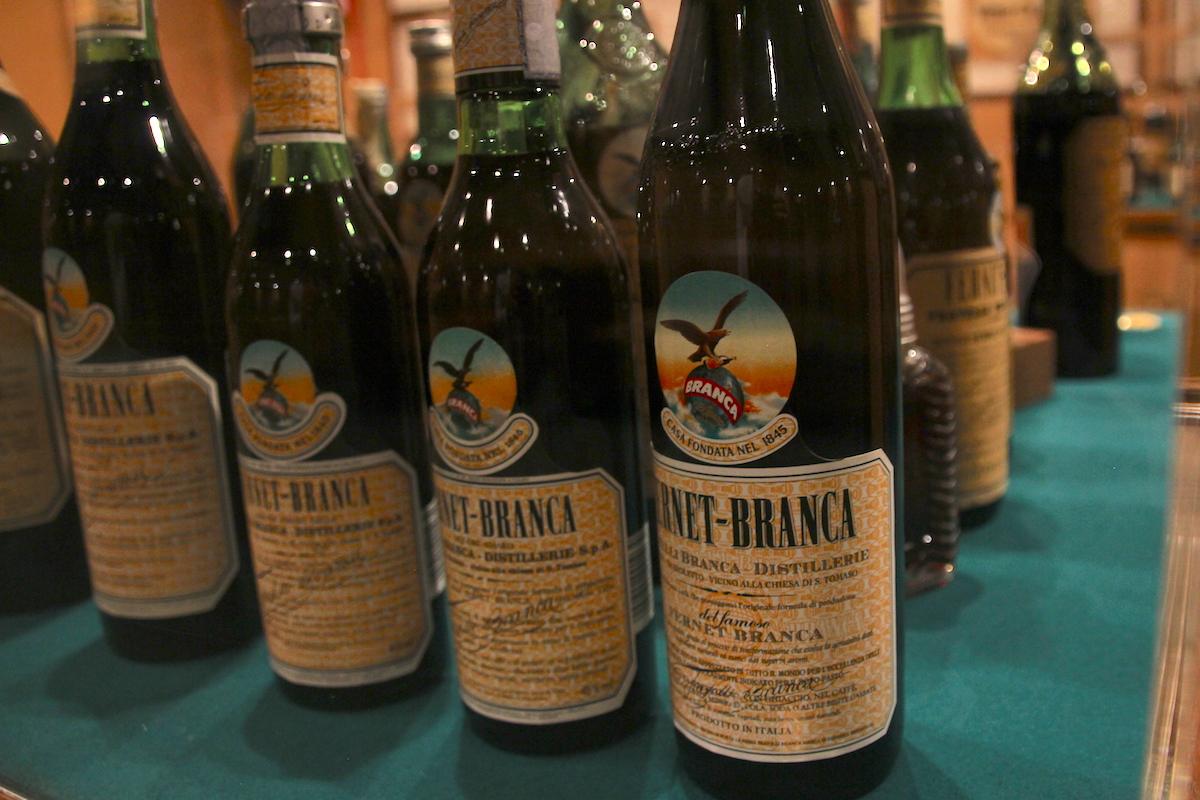
Much more than Fernet-Branca is produced at the factory today. It is also responsible for maufacturing other spirits in the Fratelli Branca family, like their Stravecchio Branca brandy, Caffè Borghetti coffee liqueur, and Candolini Grapppa. Fratelli Branca also owns the Carpano brand of vermouths, and all that brand’s products, including Punt e Mes, are produced at the distillery.
The museum begins with a series of portraits and busts depicting the various presidents of Fernet-Branca, ending at Niccolò Branca— current CEO and great, great grandson of Bernardino. The following room holds an enormous trove of Fernet-Branca branded swag. There are playing cards, ash trays, postcards: the sort of merchandise you’ve seen a Bud Light or Jack Daniel’s logo slapped onto a thousand times. But the difference is age: these are branded artifacts from the early 20th century.
Vaschetto explains that when it comes to branding, Bernardino Branca is considered a pioneer. “Some say that Bernardino was inventing marketing when marketing didn’t even exist,” Vaschetto says.
There are also items that speak to Fernet-Branca’s role as one of the first truly international brands. We see booklets that were distributed to salespeople that are filled with advice on how to approach people from different countries and avoid cultural faux paus.
After this we see some of the old, retired equipment once used to make Fernet-Branca, including an enormous cylindrical press used to crush herbs. The room also hosts a giant barrel that has been sliced open and sectioned apart so it can exhibit the dozens of herbs, roots and spices used in Fernet-Branca and other spirits made by the distiller.
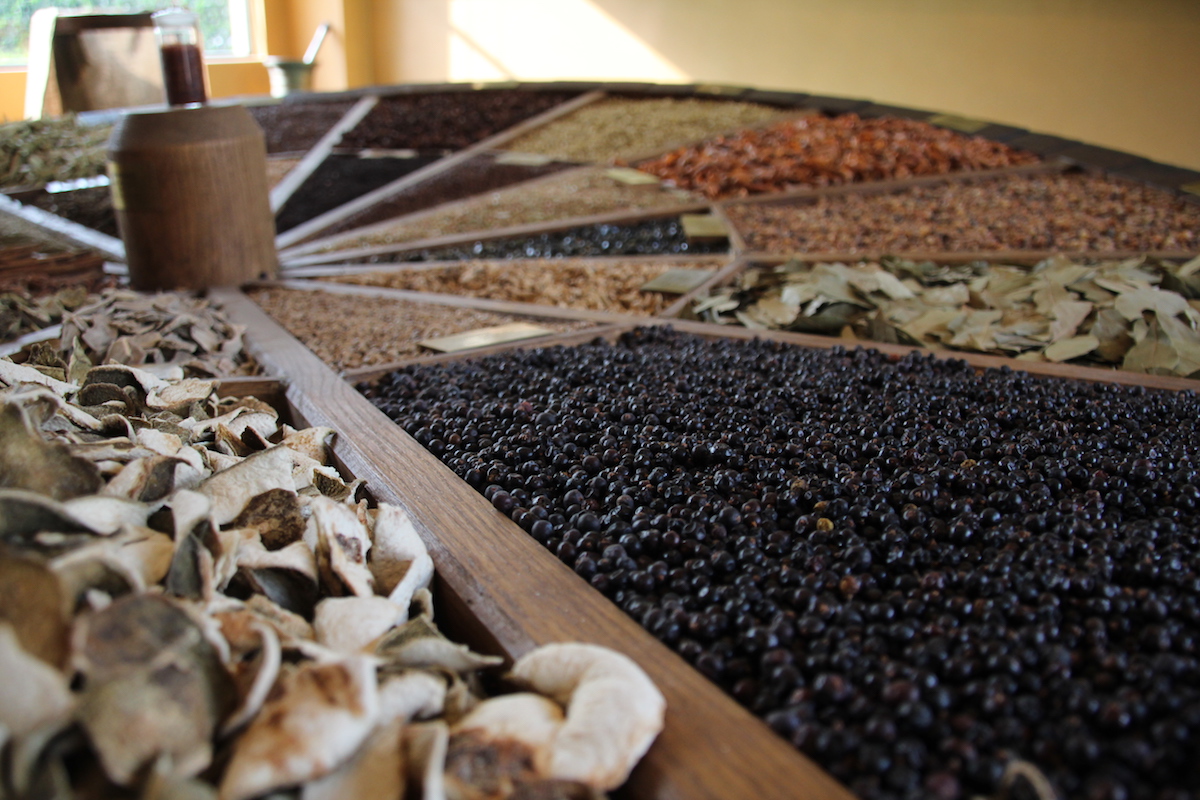
Fernet-Branca’s Secret Recipe
The formula that makes Fernet-Branca calls for 27 different ingredients. I ask Vaschetto if all of those ingredients are included in the display, and she tells me that they are not. “Otherwise you will know the secret,” she says, half-jokingly. She does invite me to pick up a pinch of myrrh from the display, and instructs me to warm it up between my hands before smelling its aroma. I do so, then take a sniff: it smells like… Fernet-Branca.
Vaschetto also points out the chamomile, noting that the flower is a traditional cure-all for stomach ailments. The soothing feeling that Fernet-Branca provides after too much cheeseburger suddenly makes more sense.
The tour moves on to a carefully reconstructed tableau depicting the company president’s desk in days past. It’s an imposing set-up, complete with a half dozen wood-handled rubber stamps. There is one other chair in the scene, positioned to the side of the president’s desk rather than directly across from it. Vaschetto explains that this was a power play—just another way for the CEO to remind the second sitter of who’s in charge.
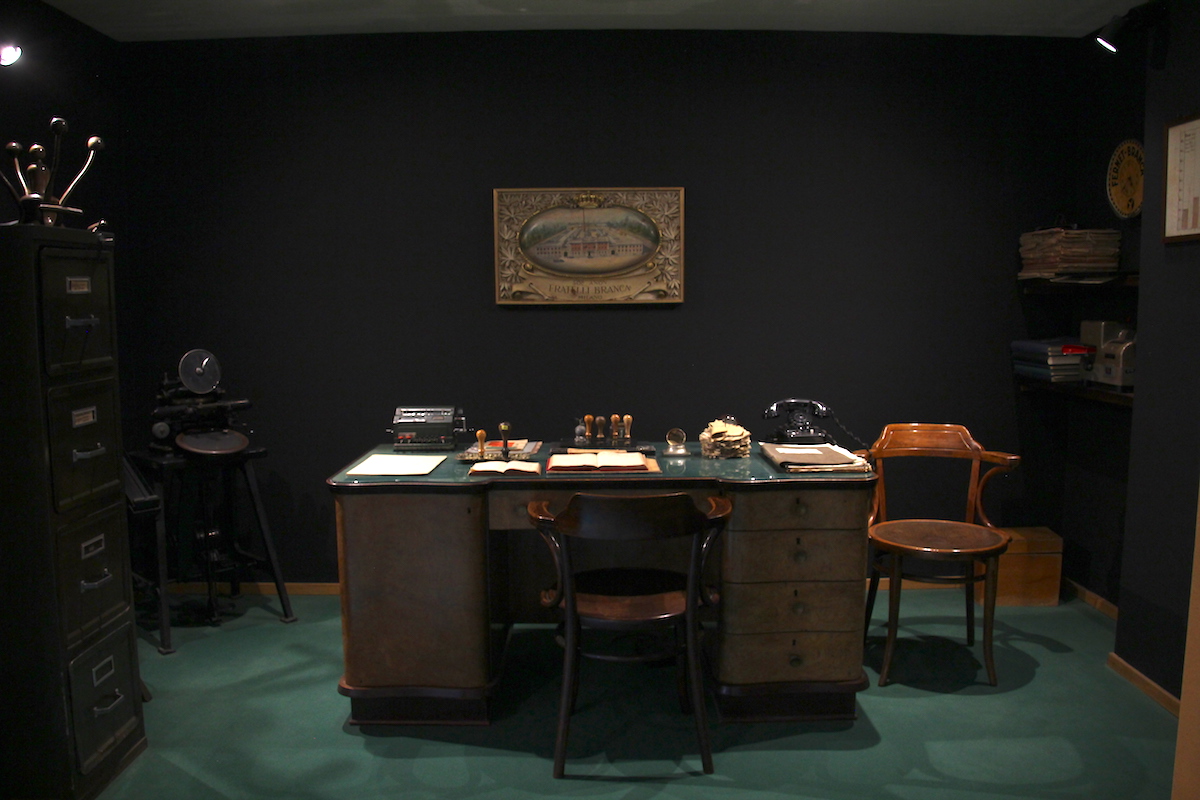
A Cultural Icon
Fernet-Branca has produced many iconic images across its nearly two centuries of existence, and many of them are on display in the next room. There’s the stocking-clad king wearing a dress made of Fernet-Branca bottles. An image of a woman in a white dress, personifying Italy, serving a bottle of Fernet-Branca on a pillow to the flags of the world. And then there is that sashaying crocodile, smiling wide and grasping a bottle of Fernet-Branca in its extended, reptilian hand.
“This crocodile is smiling because he’s had Fernet-Branca and he’s able to digest everything. So he’s not sad at all,” Vaschetto explains.
Following this, we see a table scattered with old chemistry equipment. Vaschetto says that this was once used to monitor the spirit’s quality. Today there is a modern lab within the factory that tests every finished barrel to ensure it meets consistency standards.
The next display features a long line of bottles—most are a familiar green, and labeled with the brand’s iconic logo. These bottles represent the evolution of Fernet-Branca packaging, from the time it was first sold in pharmacies to the present day. Little has changed with time, aside from the addition of the logo, which was added as a response to the growth of fernet as a category produced by other brands. “They needed to have something to say that we were the original one,” Vaschetto says. That design, created by an artist from Trieste in 1895, depicts an eagle—a symbol of the product’s strength—flying above the globe, gripping a bottle of Fernet-Branca in its talons. Though first conceived for the brand, it later became the logo for the entire company.
But these aren’t the only bottles in the room. There is a display of discontinued Fratelli Branca products, including marsala and rum. Also on exhibit are “the imitators,” separated into legitimate competitors and outright counterfeits. Vaschetto directs my attention to one of the counterfeit labels, noting that only a misplaced hyphen prevents it from being mistaken for a bonafide Fernet-Branca logo.
The tour continues in a room filled with old black-and-white photographs. These photos depict now-closed distilleries that the brand once operated in France, Switzerland, and the United States. Vaschetto explains that the American distillery, located in Tribeca, existed solely because of a law that required all spirits sold in America to be made in America. Today there is only one other Fernet-Branca distillery, in Buenos Aires.
The museum portion concludes with a treasure trove of brand miscellany. The most interesting pieces among them are a 1930s Fiat Balilla emblazoned with the brand’s logo across its door. Vaschetto calls this one of the first examples of “moving marketing.” Even more arresting is an enormous, spectacular sculpture of the Fernet-Branca eagle, made from welded metal and scores of actual Fernet-Branca bottles—a gift from a Finnish fan club.
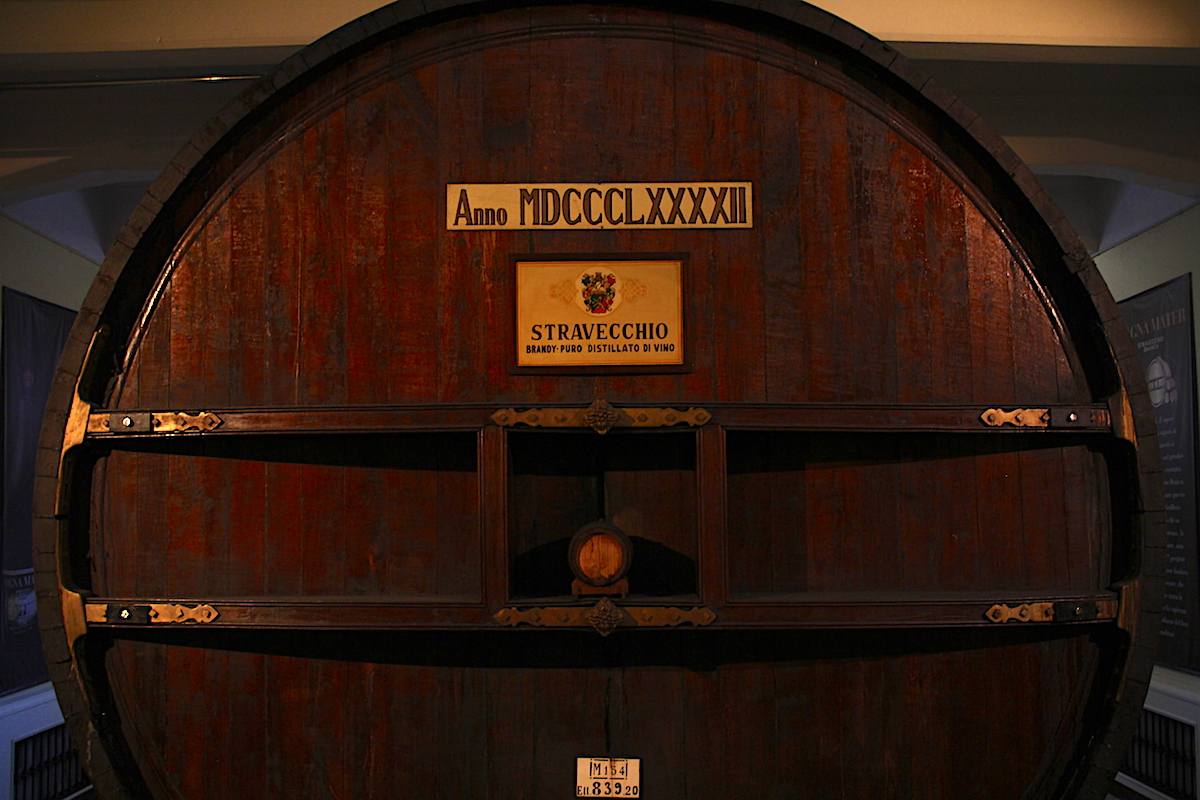
With the museum thoroughly explored, we venture onto the production side, where I am confronted by the wonder that is “Big Mother.” Big Mother is a room-filling brandy barrel that dates back to 1892, and Vaschetto says that it’s the largest wooden barrel in Europe. But that moniker refers to more than size: it serves as the literal “mother” of their brandy, which is blended inside the massive cask before being transferred to oak barrels for three more years of aging. “From the mother to the daughters,” says Vaschetto.
Even Fernet-Branca Needs to Mature
We walk around Big Mother’s colossal bulk to access a steep, narrow staircase that descends into a dark, subterranean chamber below. This passage to the underground feels like entering a forbidden crypt, but the smell that greets me at the bottom is anything but crypt-like. In fact, it all smells rather… minty.
There we find the oak barrels that are currently aging brandy. They are much smaller than Big Mother, yet still enormous when compared to whiskey barrels—each holds 300 liters of brandy. There is a small chalkboard hanging from every barrel, which workers have used to mark the day the aging process began, and other relevant statistics.
Further down the hallway are 140-liter barrels containing Fernet-Branca. Each barrel is made with oak sourced from Slavonia, the Eastern region of Croatia. Within each, the spirit that will become Fernet-Branca is macerating with the brand’s secret, 27-ingredient formula. Vaschetto explains that the oak barrels do not impart their own flavor into the spirit. Instead, they add a quality of roundedness to the flavor by allowing the mixture to breathe while it macerates. After one year in the barrel, the spirit is bottled and becomes Fernet-Branca as we know it.
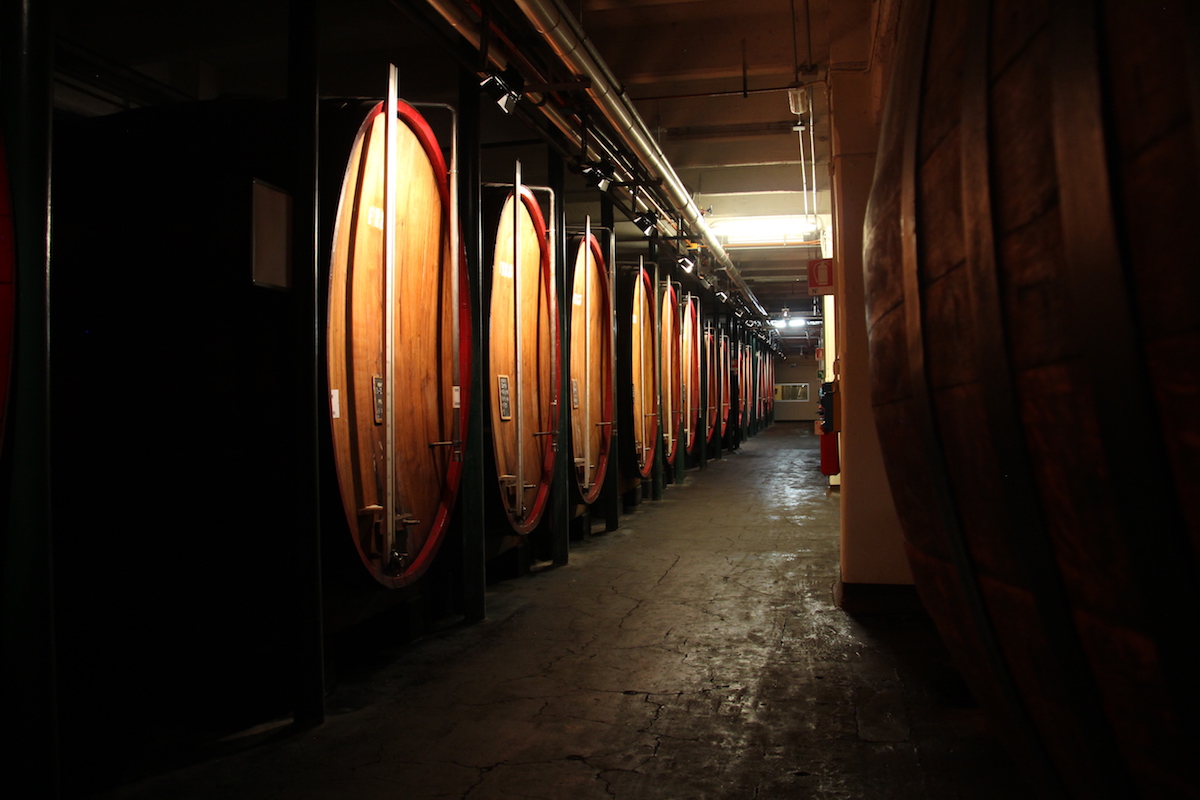
Hours later, I find myself facing a plate of veal Milanese that rivals an elephant ear in size. It’s absolutely delicious, and before I know it half the plate has been cleared. I pause to consider whether eating more is wise, but another forkful enters my mouth as the “while in Italy” excuse lever is pulled.
I realize that I may regret the decision in 15 minutes. But I’ve spied a familiar, digestion-friendly bottle on the bistro’s backbar. And if that bottle should go empty, I can rest easy in knowing that several thousand liters of the bitter elixir are slumbering in oak barrels just a few miles away.
All photos by Ryan Twardzik unless otherwise noted.
